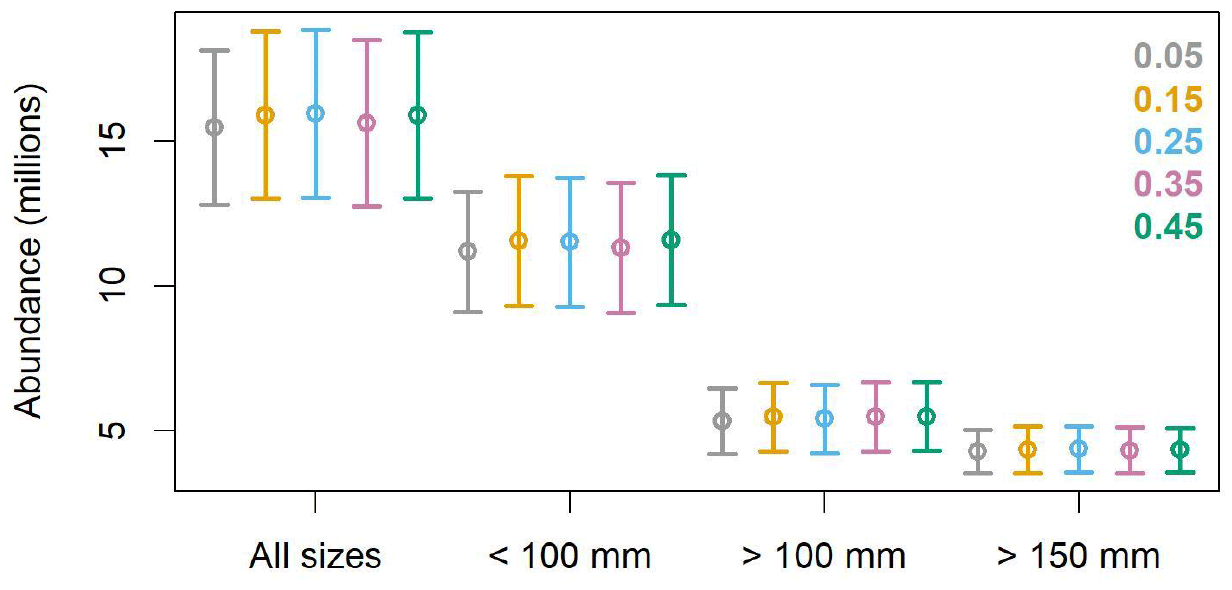Scottish scientific electrofishery for razor clams trial - biological and ecological goals: progress report
Report summarising data and main findings from the trial to date.
Appendix 1
Sensitivity analyses for abundance estimation
Sensitivity analyses were carried out for the Largo Bay (part of the Firth of Forth trial area) kriging work, to investigate the effect of the lag parameters used in calculating the experimental variogram (lag distance, and number of lags), and the kriging grid size on abundance estimates. Varying lag parameters had no significant impact on abundance estimates for any of the razor clam size categories (Figure A.1), therefore lag distance in all cases was set at the mean nearest neighbour distance. Grid size had virtually no impact on abundance estimates for any razor clam size category, and therefore it is recommended that a less dense grid than the 286 x 233 grid used here could be implemented in future assessments in order to reduce computation time.

Contact
There is a problem
Thanks for your feedback